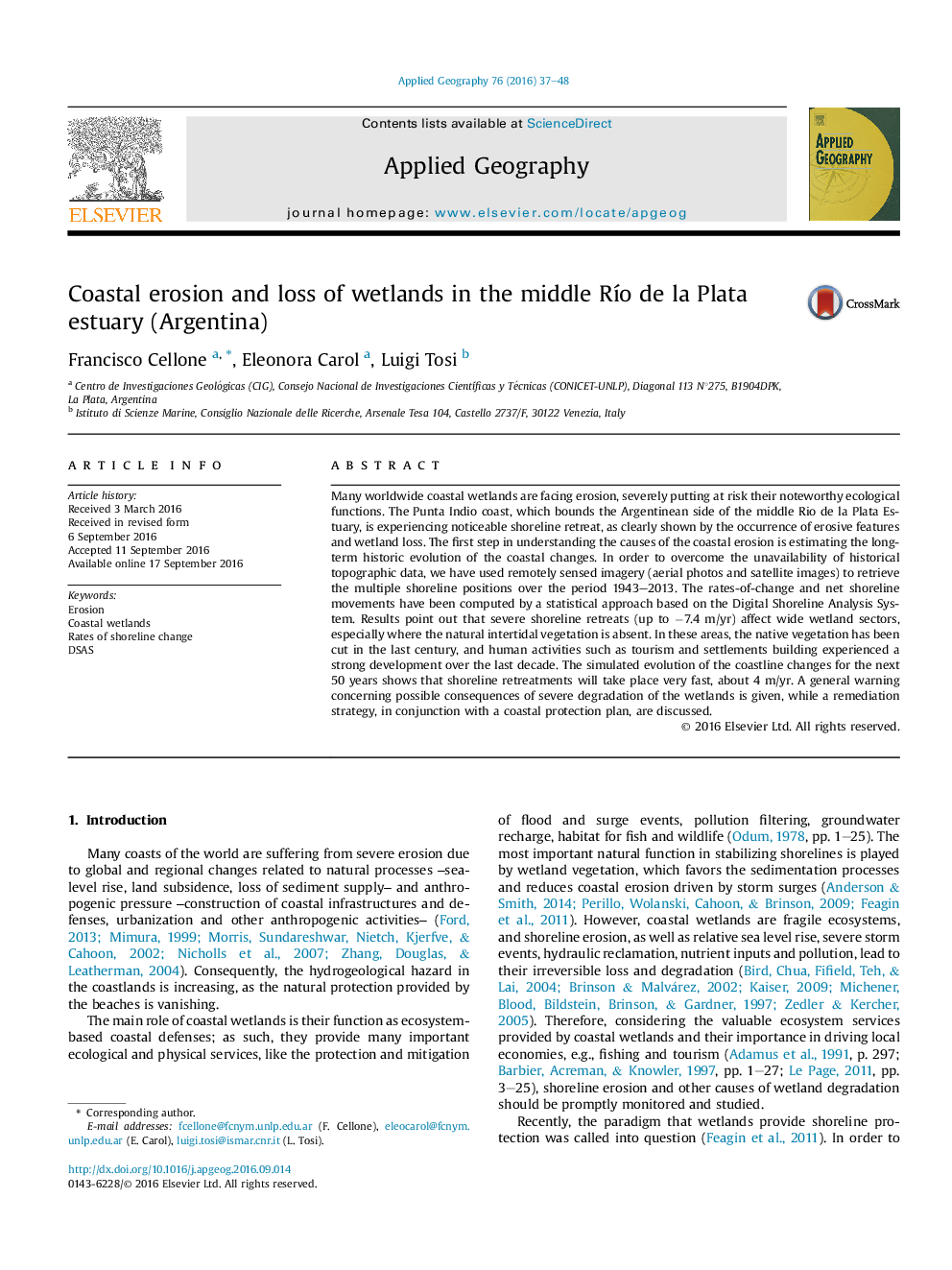| Article ID | Journal | Published Year | Pages | File Type |
|---|---|---|---|---|
| 6458532 | Applied Geography | 2016 | 12 Pages |
â¢Punta Indio coastal wetlands are experiencing noticeable shoreline retreatment.â¢Remotely Sensed imagery is used to assess changes in shoreline positions.â¢DSAS is used to calculate shoreline change rates and net shoreline movements.â¢Natural intertidal vegetation plays a main role in coastal protection.
Many worldwide coastal wetlands are facing erosion, severely putting at risk their noteworthy ecological functions. The Punta Indio coast, which bounds the Argentinean side of the middle Rio de la Plata Estuary, is experiencing noticeable shoreline retreat, as clearly shown by the occurrence of erosive features and wetland loss. The first step in understanding the causes of the coastal erosion is estimating the long-term historic evolution of the coastal changes. In order to overcome the unavailability of historical topographic data, we have used remotely sensed imagery (aerial photos and satellite images) to retrieve the multiple shoreline positions over the period 1943-2013. The rates-of-change and net shoreline movements have been computed by a statistical approach based on the Digital Shoreline Analysis System. Results point out that severe shoreline retreats (up to â7.4 m/yr) affect wide wetland sectors, especially where the natural intertidal vegetation is absent. In these areas, the native vegetation has been cut in the last century, and human activities such as tourism and settlements building experienced a strong development over the last decade. The simulated evolution of the coastline changes for the next 50 years shows that shoreline retreatments will take place very fast, about 4 m/yr. A general warning concerning possible consequences of severe degradation of the wetlands is given, while a remediation strategy, in conjunction with a coastal protection plan, are discussed.
